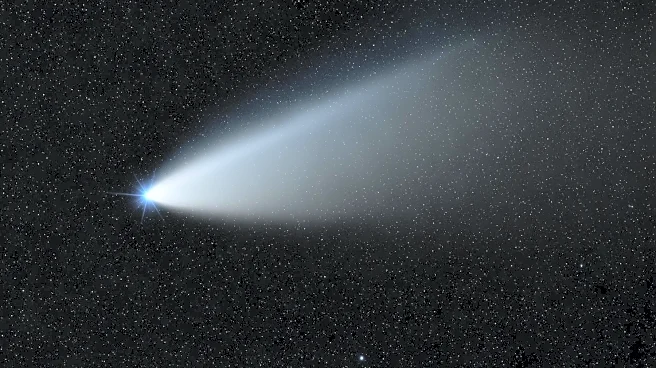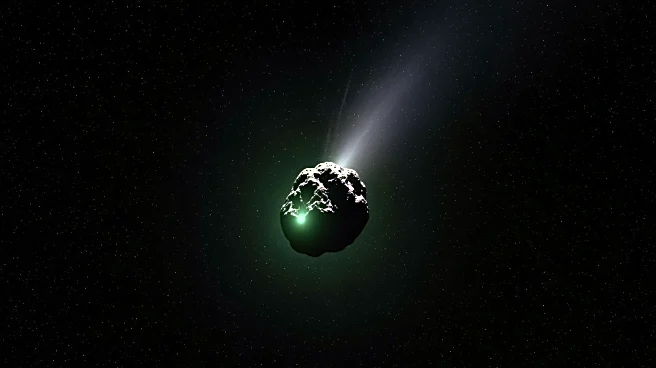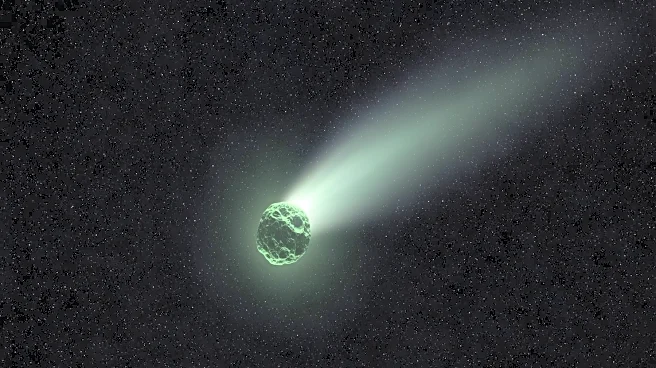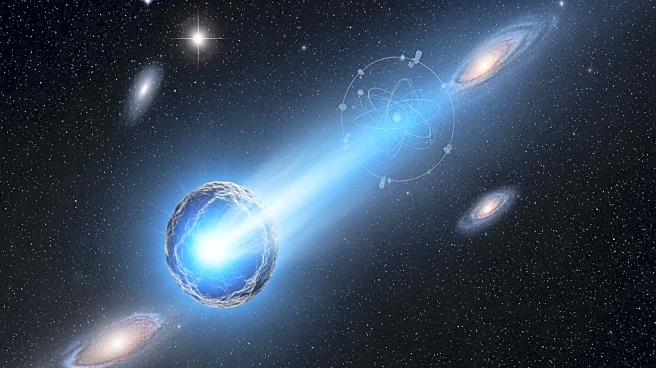What's Happening?
The interstellar comet 3i/Atlas, discovered in July 2025, has captured the attention of astronomers due to its unique characteristics. The comet exhibits sudden bursts of speed, a dramatic color shift, and an unusual network of jets, leading scientists
to describe it as a 'one in a million' anomaly. Harvard astrophysicist Avi Loeb suggests that 3i/Atlas could have a mass of over 50 billion tons, significantly larger than previous interstellar objects. The comet's behavior, including non-gravitational acceleration and an unexpected radio signal, has sparked debates about its origin, with some speculating on the possibility of artificial influences.
Why It's Important?
The study of 3i/Atlas provides valuable insights into the nature of interstellar objects and the dynamics of our solar system. The comet's unusual features challenge existing theories about cometary behavior and may lead to new understandings of cosmic phenomena. The potential for artificial influences raises intriguing questions about the possibility of extraterrestrial technology, prompting further investigation and discussion within the scientific community. The comet's observation also highlights the importance of international collaboration in space research, as telescopes worldwide continue to monitor its trajectory and characteristics.
What's Next?
As 3i/Atlas approaches its closest point to Earth in December 2025, astronomers will continue to gather data to better understand its composition and behavior. Upcoming spectroscopic observations may reveal whether the comet's jets contain natural gases or other substances, providing clues to its origin. The scientific community will likely engage in further analysis and debate, exploring both natural and artificial explanations for the comet's anomalies. The findings could have implications for future space exploration and the search for extraterrestrial life.













